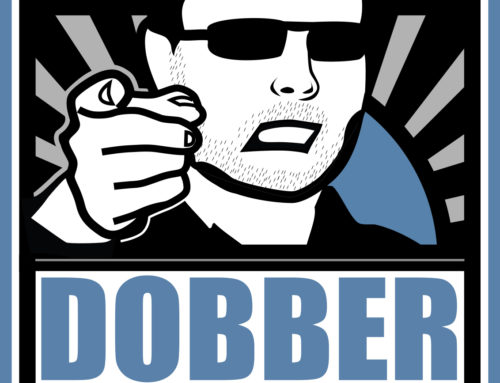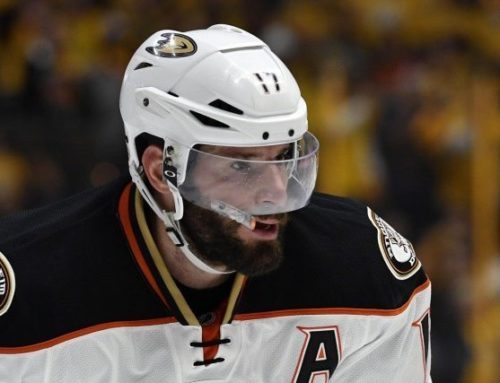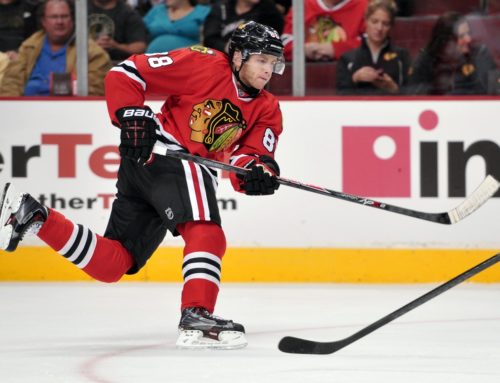Killer Penalty Killers
Justin Goldman
2010-12-13

A goaltender's ability to kill a penalty is an important part of not only tracking their performances, but quantifying their potential short and long-term success. Within a game, killing a penalty forces a goalie to increase their focus, awareness and timeliness. They also have to exert more energy, deal with more traffic and usually make those extremely tough lateral post-to-post pushes.
Because of these things, we know what kind of influence strong and weak penalty killing has on the outcome of a game. And regardless of how weak or strong the opposition, there's nothing easy about stopping shots a man down. Now that we're ten weeks into the season, this is a good time to look at one of the most revealing goalie stats around – power play save percentage.
I've spoken about this stat many times before, especially during the Stanley Cup Playoffs. Stopping pucks when the pressure is high and the scoring chances are at a premium goes a long way in separating the men from the boys. Ultimately, it gives you great insight on a goalie's strengths, weaknesses, mental toughness and future potential as a durable NHL goaltender.
For prospects, killing penalties gives great insight on their current skill level and on a number of key goaltending dynamics. Are they able to track the puck through and around bodies? Do they effectively eliminate space in the corners? How do they handle tips and deflections? Can they battle through traffic and establish a presence in their crease? Are they mentally tough or easily rattled? Can they control rebounds, absorb initial shots from the point and stay square to second and third opportunities? These are all questions that are answered much quicker when a goalie kills a penalty as opposed to normal five-on-five hockey.
And before I dig into some PK stats, I want to discuss the importance of a goalie's hand positioning when killing penalties.
Because goalies dominate shots down low, good hand placement is the true essence of PK success. The most effective hand positioning right now is seen with goalies such as Carey Price, Kari Lehtonen and Pekka Rinne. Their hands are held higher than normal, usually closer to their lower chest then their upper hips, and well out in front of their body. Their blocker arm is tight, but not locked, to their hip and is also held in front of them in order to eliminate time and space on plays right around the net.
If the hands are held too tight and close to the body, a goalie is more likely to get beat over their shoulders, under the crossbar or just inside the posts. When hands are held further back and too tight to the body, this often gives shooters just a sliver of extra time and space to fire shots and pick their spot, which is a huge advantage for today's NHL snipers. Peter Budaj is one goalie I've mentioned numerous times in the last month as having very weak hand positioning, so it's no surprise to see that his power play save percentage is one of the weakest in the entire NHL.
It should also be pointed out that team defense clearly plays a major role in a goalie's proficiency when killing penalties. Teams with great PK units like Montreal, Boston and Detroit will ultimately make the lives of their goalies much easier. This dynamic plays out in even-strength play as well, so while I won't try to quantify or analyze the impact of a team's defense, we all know that it does play a role in the save percentage a goalie posts.
Below I will discuss just a few recent newsworthy goalies in the fantasy scene and explain what their PP save percentage might reveal about their potential and value. When posting their rank, I'm only using goalies that have faced 50 PP shots or more. Richard Bachman, Henrik Karlsson, Marty Biron, Alex Auld, Cory Schneider and Jhonas Enroth all have higher than a .950 PP save percentage, but they have all faced less than 50 shots total, so they're excluded from the ranking. Click here if you want to see the same NHL.com list I'm using for the info below.
TOMAS VOKOUN – He's ranked third overall, sporting a .933 power play save percentage (tied with Tim Thomas) and stopping 97 of 104 shots. It's really no surprise to see Vokoun at the top of this list, as he consistently flies under the radar in just about every area of goaltending. The fact he's a wily veteran with a terrific hybrid style and ability to read plays is revealed in his great patience, which makes him an amazing penalty killer. His PK prowess and Florida's stable defensive play has the team PK sitting 8th overall at 84.4 percent.
CAREY PRICE – He's ranked fifth overall with a .915 save percentage, having stopped 129 of 141 power play shots. The Canadiens are first overall in the NHL with an 89.3 PK rate and this lethal combination has allowed Price to improve his confidence and his long term value. There's not too much revealed in this area of his game, other than he has proved a billion pundits wrong and has taken a giant step towards the potential he's capable of reaching. What's even more exciting for his owners is that he's yet to tap the deep well of skills. It's onward and upward for Price as he continues reaching for "elite" status.
MIKE SMITH – Ranked just below Price is Smith, a goalie with a maligned value so far this season. With a .914 save percentage (just six goals on 70 shots), this statistic proves he has improved technically. He's not nearly as spastic in the crease, he's more composed and he's tracking pucks better than ever before. Considering Dan Ellis has just a .835 save percentage and has allowed 14 goals on 85 shots, there's a stark comparison between the two. One seems much more focused than the other, one has better size, a better set of active hands and in my opinion, better long-term value. Tampa Bay currently sits 13th overall on the PK at 83.2 percent, so you can clearly see who helps their team out more when it matters most. Despite the rocky start to his season, I still feel managers need to watch him closely – he could break out at any given moment.
JONAS HILLER – As we start to look at goalies that have below a .890 save percentage, one goalie that must be discussed is Hiller. He has faced more PP shots than anyone, stopping 156 of 176 total. We all know how well he's playing for the Ducks this season and just how well he covers the lower portion of the net. But if there's one clearly defined weakness in his game, it would be his glove side. As I explained above, goalies that hold their glove too far back and too tight to their body usually get burned over their shoulder or inside the post. This has happened to Hiller a number of times. More specifically, my scouting report says he has trouble catching pucks because his hands are not out in front of him. He waves at them too often and is prone to batting them out of the air. Until he can improve in this area, I expect his PP save percentage will stay below .890 for the season.
CRAIG ANDERSON – Compared to last season's dominance, his .873 save percentage seems rather weak right now. But don't be fooled, for he's over a proverbial hump and on the rise. Similar to Thomas, Anderson throws technique out the window and simply does what it takes to stop the puck. With great size, terrific focus and a strong work ethic, he's starting to come up huge for the Avs when killing penalties. Although he was out of the lineup for most of November after a sub-par October, the last two wins showed me that he's recapturing last season's form. I've noticed that he's a little calmer than usual and not overreacting or sliding around on his back as often as before. This is great news for the injury depleted Avs and even better news for his fantasy owners. Put him in your lineup and on your radar – the Avs play 16 of their next 21 games at home, he's totally healthy and he's entering this stretch with a lot of confidence and energy.
ANDERS LINDBACK – With just a .844 power play save percentage, which ranks him near the bottom of the league, Anders has allowed seven goals on 45 shots. In what is considered a weakness in his game, this is a revealing stat when you take into account that Nashville has the 5th best PK at 85.6 percent. But have no fear, for Lindback is clearly at a stage in his rookie season where a lot of adjusting and learning is taking place. I feel his ability to shadow Pekka Rinne, who has an outstanding .922 power play save percentage (ranked 10 of 68 overall), will lead him to be very successful in this category as time goes on. With a shutout in his most recent start and Rinne out for a few more weeks, this is a crucial stretch of games for Lindback in which we will learn a lot about his short and long-term potential. But so far, he's been a great surprise and a true Rinne clone.
All of these tidbits are pretty solid, but just like every other goaltending statistic, there's little correlation to PP save percentage and a goalie's fantasy value. Henrik Lundqvist, who is truly elite and having a great season, is one of the weakest killers with a .853 save percentage. I can't say for sure, but this might reveal his reformed leg pad sizing has had more of a negative effect than I ever expected. Lehtonen is another elite goalie and his .852 killing percentage does not reflect his true fantasy value.
On the other hand, seeing Sergei Bobrovsky way down the list with a .858 save percentage is no surprise at all, as he adjusts and learns the game on a smaller surface in the same way as guys like Lindback and Jonas Gustavsson. What does a .904 save percentage say about Antti Niemi when Ondrej Pavelec has a .908 mark? And Jose Theodore's .903 save percentage reveals just how well he's played behind Niklas Backstrom, who sports just a .863 percentage.
In conclusion, dissecting a goalie's power play save percentage is an excellent way to get a well-rounded view of a goalie's current fantasy value, as well as a little more insight on their performances to date. But in no way does prove what they are capable of doing or what kind of success they'll have as time goes on. At the end of the day, just like I've said for years, you simply have to watch as much hockey as possible to get the best read on a goaltender.





 PHI
PHI WSH
WSH FLA
FLA MIN
MIN N.J
N.J T.B
T.B BUF
BUF DAL
DAL MTL
MTL NYR
NYR CBJ
CBJ TOR
TOR NYI
NYI DET
DET STL
STL WPG
WPG CHI
CHI VAN
VAN SEA
SEA COL
COL NSH
NSH BOS
BOS EDM
EDM CAR
CAR UTA
UTA OTT
OTT CGY
CGY PIT
PIT ANA
ANA S.J
S.J VGK
VGK L.A
L.A
